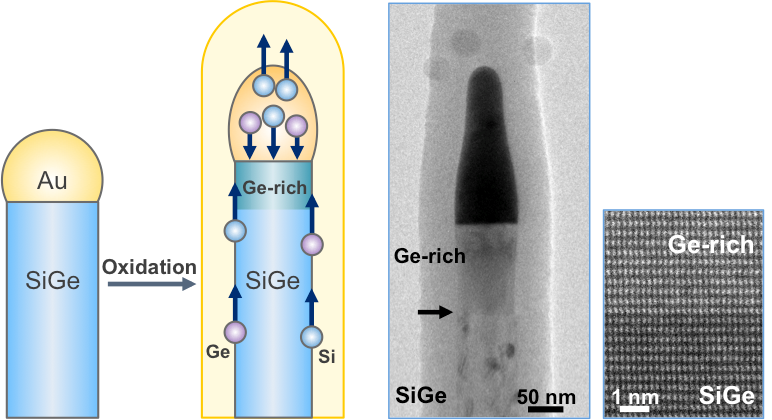

Producing Atomically Abrupt Axial Heterojunctions in Silicon-germanium Nanowires by Thermal Oxidation (by Prof. Cheng-Yen Wen’s group)
Silicon-germanium (SiGe) heterojunction nanowire structures are useful for electronic, optoelectronic, and thermoelectric applications. We recently developed a new fabrication method to produce heterojunctions between two sections of different Ge concentrations simply by thermal oxidation of low-Ge content SiGe nanowires. Transmission electron microscopy (TEM) analysis shows that the heterojunction interface is atomically abrupt and the formed oxide shell is composed of only silicon and oxygen. Based on these results, we proposed a mechanism – the formation of silicon oxide shell during oxidation ejects Ge atoms out of the nanowires and these Ge atoms diffuse into the AuGeSi eutectic liquid on nanowire tips, followed by nucleation of higher concentration of Ge atomic layers at the liquid/solid interface. By this method, forming sharp interfaces in SiGe nanowires provides an opportunity for designing heterojunction structures with well-defined physical properties. We are further exploring the applications of such a growth method, e.g. direct nanowire growth on SiGe alloy substrates and heterojunction nanowires of other binary alloy materials. (This work has been published in Nano Letters, 17, 7494 (2017))



